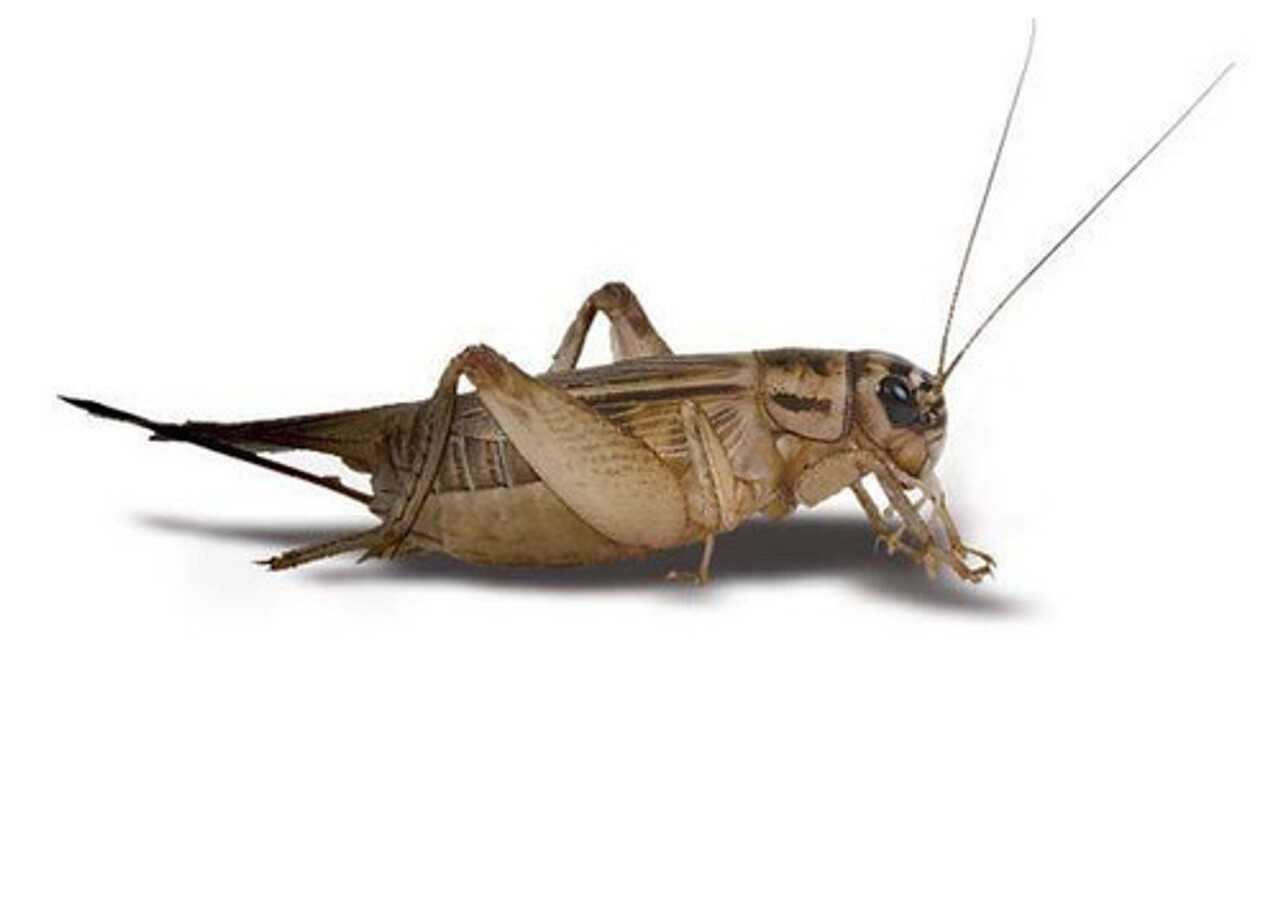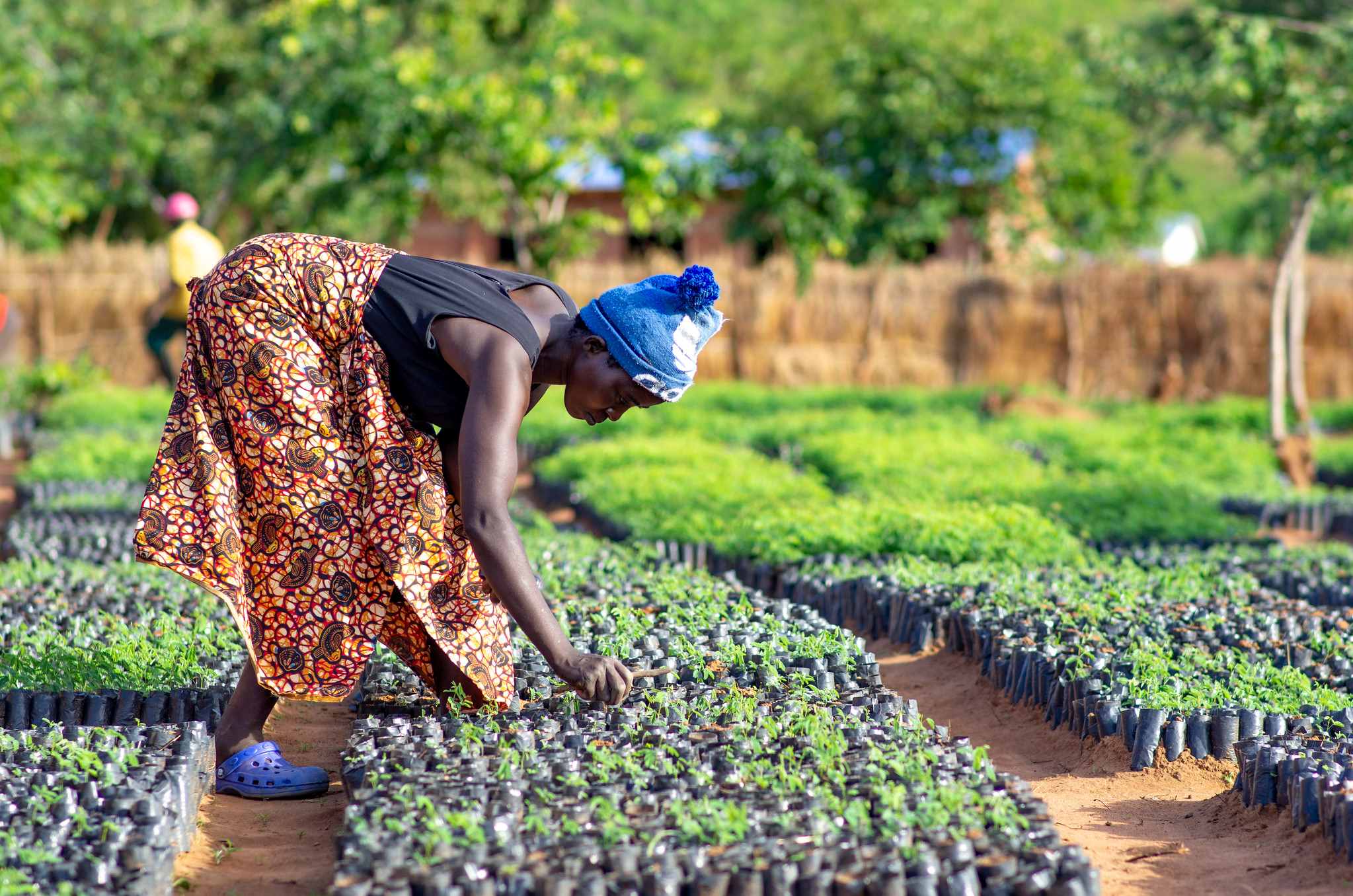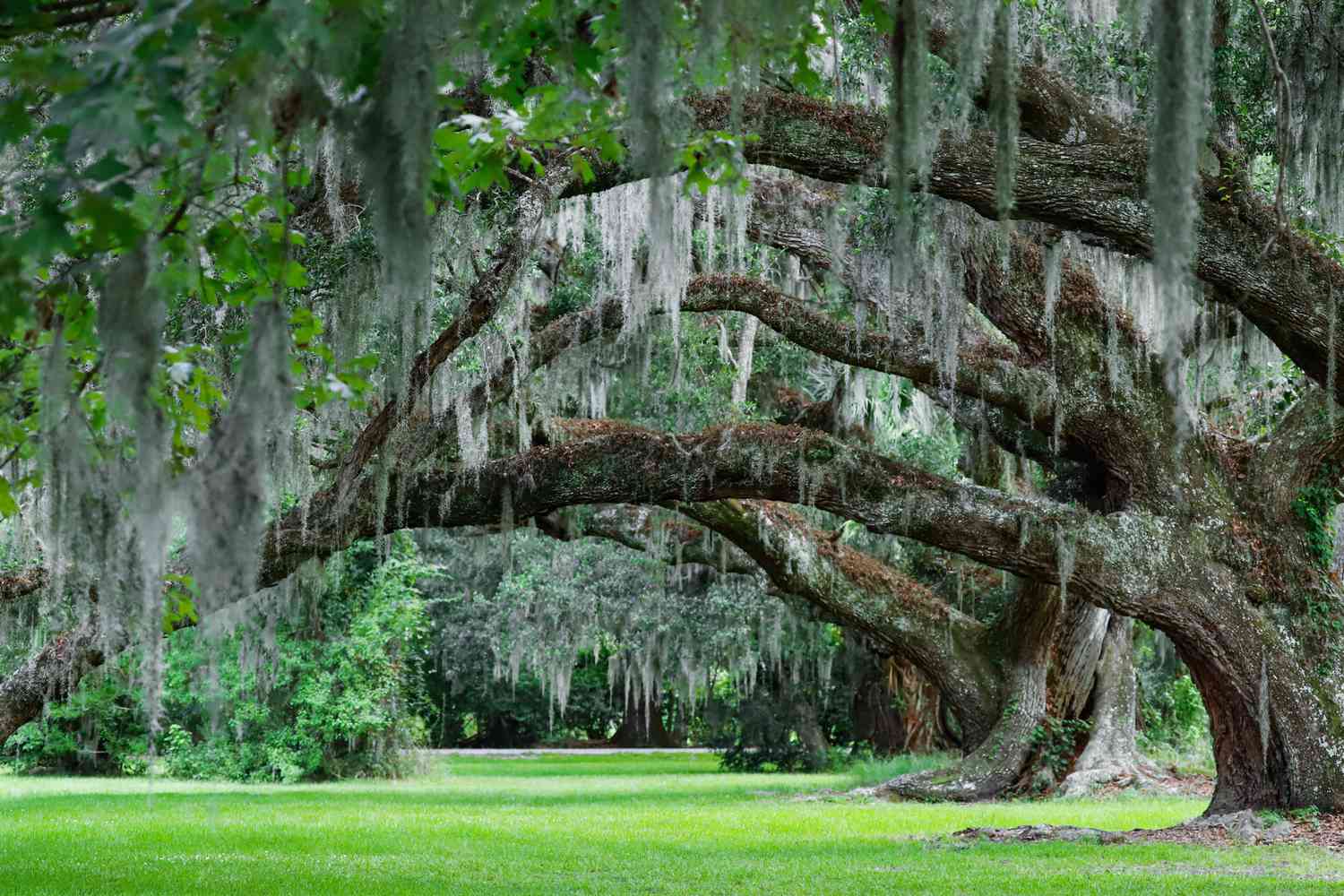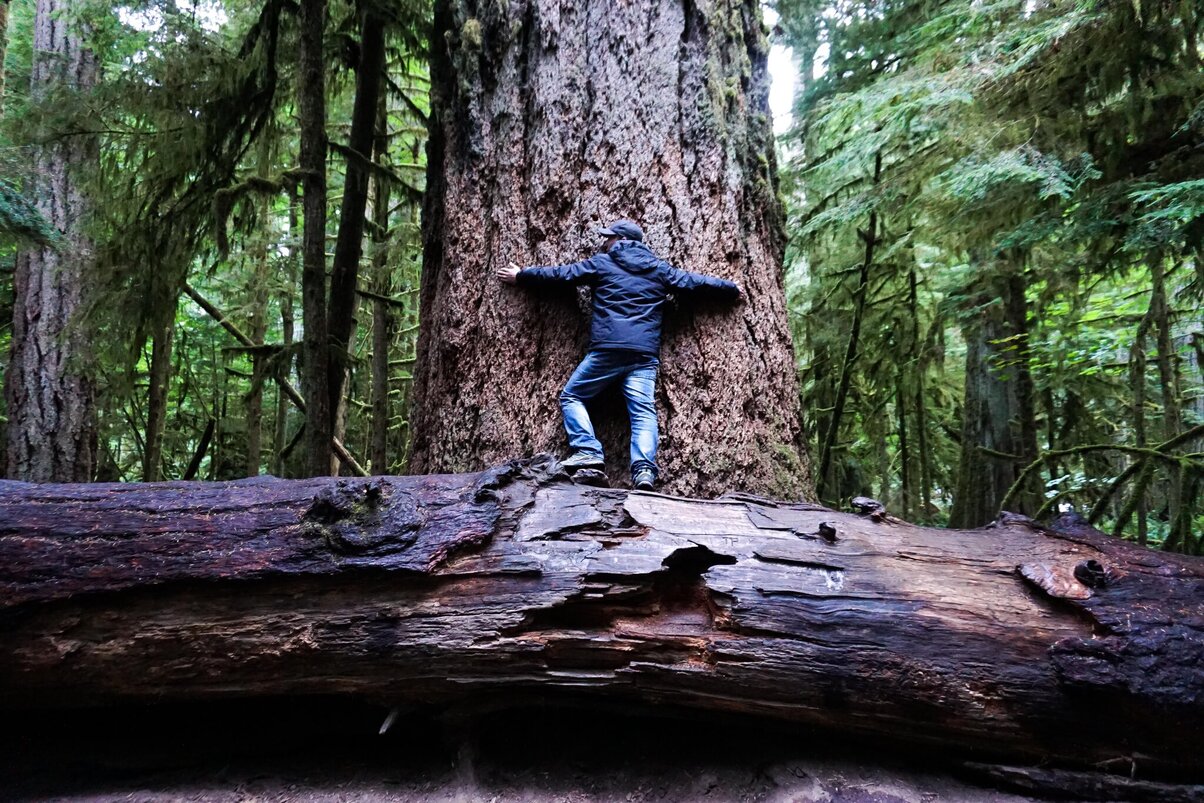Home>Gardening News and Trends>Latest News>What Insects Live In Swamps
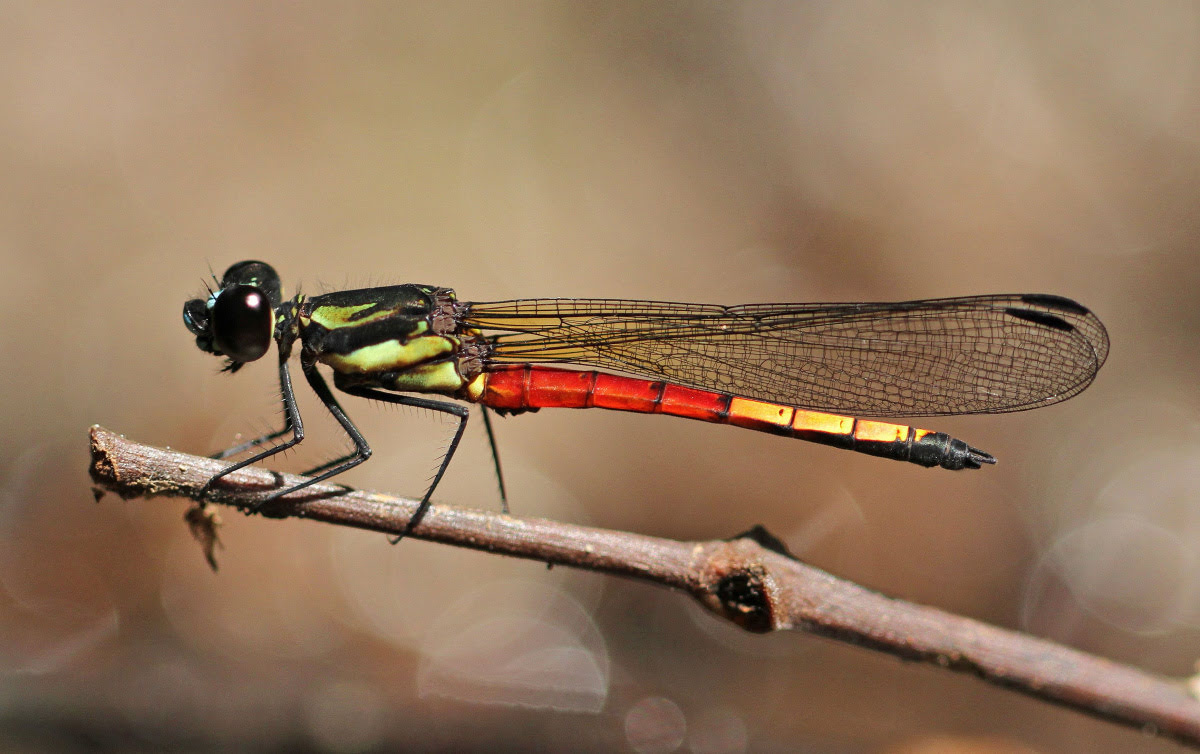

Latest News
What Insects Live In Swamps
Modified: January 22, 2024
Discover the latest news on the diverse range of insect species that call swamps their home. Explore the fascinating world of swamp-dwelling insects and their unique adaptations.
(Many of the links in this article redirect to a specific reviewed product. Your purchase of these products through affiliate links helps to generate commission for Chicagolandgardening.com, at no extra cost. Learn more)
Table of Contents
Introduction
Welcome to the fascinating world of swamps, where lush vegetation meets thriving ecosystems and diverse wildlife. Swamps are unique wetland areas characterized by their slow-moving or stagnant water, making them the perfect habitat for a wide range of organisms, including insects. These complex ecosystems play a crucial role in maintaining the overall health of our planet.
Swamps are found all over the world, from tropical regions to temperate climates, and even in colder areas. They provide essential environmental services, such as water filtration, flood control, and carbon sequestration. But beyond these vital functions, swamps are home to a plethora of fascinating insect species that have adapted to thrive in these unique environments.
In this article, we will explore the diverse world of insects that call swamps their home, their remarkable adaptations, and the crucial roles they play in these ecosystems’ intricate web of life. From dragonflies gracefully skimming the water’s surface to nocturnal beetles scuttling among the dense vegetation, swamps are teeming with an astonishing variety of insect life.
So, let’s dive deeper into the hidden world of swamps and discover the remarkable insects that inhabit these important ecosystems.
Importance of Swamps
Swamps are not just stagnant bodies of water; they are dynamic and vital ecosystems that play a significant role in maintaining the health of our planet. These unique wetland habitats offer numerous benefits that are essential for both wildlife and humans alike.
One of the primary benefits of swamps is their role in water filtration. As water flows through the dense vegetation and the intricate network of roots found in swamps, many pollutants and sediments are naturally filtered out. This process helps to purify the water and improve its quality before it reaches other bodies of water or is used by humans for various purposes such as drinking or irrigation.
In addition to water filtration, swamps also serve as excellent natural flood control systems. The dense vegetation in swamps acts as a sponge, absorbing excess rainwater and reducing the risk of floods downstream. This natural flood mitigation is crucial, especially in areas prone to heavy rainfall or when faced with the threat of hurricanes or tropical storms.
Furthermore, swamps contribute to carbon sequestration, aiding in the fight against climate change. The dense vegetation in swamps, particularly mangroves, can store large amounts of carbon dioxide from the atmosphere. By trapping carbon dioxide, swamps help to mitigate its effects in the atmosphere, effectively reducing greenhouse gas emissions and preserving our planet’s delicate balance.
Swamps are also invaluable habitats for a wide variety of wildlife, providing essential breeding grounds and feeding areas. They offer a rich and diverse array of food sources, making them a haven for both resident and migratory bird species. Additionally, swamps provide shelter and nesting sites for mammals, reptiles, amphibians, and an astounding variety of insect species.
Lastly, swamps contribute to the overall biodiversity of our planet. The complex and interconnected web of life in swamps supports countless plant and animal species, making them hotspots for biological diversity. Preserving the health of swamps is essential for protecting endangered and endemic species and maintaining the delicate balance of ecosystems.
Now that we have explored the importance of swamps, let us delve into the intriguing world of insects that find their home in these unique and vital ecosystems.
Swamps as Habitats for Insects
Swamps provide a rich and diverse habitat for insects, offering a combination of stagnant water, dense vegetation, and abundant food sources. These wetland ecosystems create an ideal environment for a wide variety of insect species to thrive.
The presence of water in swamps is a crucial factor for insect populations. Many insect species rely on water bodies for breeding and reproduction. Swamps, with their slow-moving or stagnant water, provide the perfect breeding grounds for mosquitoes, midges, and other aquatic insects. These insects lay their eggs in the water, where the larvae develop and eventually emerge as adults.
The dense vegetation found in swamps also contributes to their attractiveness as insect habitats. The plants provide shelter and protection for insects, shielding them from predators and harsh environmental conditions. The intricate networks of roots and the diverse plant species in swamps create microhabitats and niches for a wide range of insect life.
Insects in swamps have evolved various adaptations to thrive in their watery habitats. For example, many aquatic insects possess specialized structures for swimming or breathing underwater. Dragonfly nymphs, for instance, have elongated bodies and gills located at the end of their abdomen, allowing them to breathe while submerged. They are formidable underwater predators, preying on smaller insects and even small fish.
Swamps also provide abundant food sources for insects. The decomposing organic matter in the water and surrounding vegetation supports a dense community of bacteria, fungi, and other microorganisms. This rich organic material attracts many detritivores, such as water beetles and water striders, which feed on decaying plant matter. Additionally, the vegetation in swamps attracts herbivorous insects that browse on leaves and stems, while predatory insects feed on these herbivores, creating a complex food web within the swamp ecosystem.
It’s important to note that while swamps provide favorable conditions for insect populations, some insects can become pests and pose challenges to humans. Mosquitoes, for example, are well-known vectors for diseases such as malaria and dengue fever. However, it’s crucial to recognize that not all insects in swamps are detrimental. Many play important roles in pollination, decomposition, and maintaining the overall balance of the ecosystem.
Now that we understand how swamps create the ideal habitat for insects, let’s explore the remarkable diversity of insect species that thrive in these unique environments.
Diversity of Insects in Swamps
The world of insects in swamps is incredibly diverse, with a vast array of species adapted to thrive in these wetland habitats. From aquatic insects to those that inhabit the surrounding vegetation, swamps support a remarkable variety of insect life.
One of the most noticeable groups of insects found in swamps is the dragonflies and damselflies. These mesmerizing creatures, with their iridescent wings and impressive flight capabilities, are commonly seen darting above the water’s surface. Dragonflies and damselflies spend much of their lives as nymphs in the water, feeding on other aquatic insects before emerging as adults to mate and lay eggs.
Mosquitoes are another prevalent insect group found in swamps. While they can be considered pests to humans due to their ability to transmit diseases, mosquitoes have a vital role in these ecosystems as a food source for many other organisms. Their larvae contribute to the nutrient cycling process in swamps, while adult mosquitoes serve as a food source for birds, bats, and other insectivorous animals.
In addition to dragonflies and mosquitoes, swamps are home to a diverse collection of beetles. Water beetles, in particular, are highly adapted to their aquatic environment. These insects have streamlined bodies and paddle-like appendages that enable them to move through the water with ease. They play a crucial role in the decomposition of organic matter and contribute to the overall ecological balance of swamps.
Butterflies and moths also find their way into swamps, adding a touch of elegance to these wetland habitats. Some species of butterflies and moths are specifically adapted to wet environments and have developed unique behaviors and physical attributes. For example, the giant water bug, commonly found in swamps, is known for its impressive size and has a distinctive piercing-sucking mouthpart used to prey on other insects.
Among the vegetation surrounding swamps, numerous insects can be found. Grasshoppers, katydids, and crickets are common insect species that thrive in these areas. Their strong hind legs and ability to produce chirping sounds add a musical touch to the swamp atmosphere.
The diversity of insects in swamps extends beyond the ones mentioned above, with countless other species playing their roles in this intricate ecosystem. Ants, bees, wasps, spiders, and many more contribute to the overall complexity and functioning of swamps.
It’s important to remember that the diversity of insect species in swamps varies depending on the geographical location and the specific characteristics of the swamp itself. Each swamp has its own unique combination of water conditions, vegetation types, and environmental factors that influence the types of insects that can thrive there.
Now that we have explored the remarkable diversity of insects in swamps, let’s delve into the fascinating adaptations that allow these insects to flourish in such unique ecosystems.
Adaptations of Insects in Swamps
Insects that inhabit swamps have evolved various adaptations that allow them to thrive in these challenging wetland environments. These adaptations enable them to survive in waterlogged conditions, find food sources, avoid predators, and take advantage of the available resources within the swamp ecosystem.
One of the key adaptations of insects in swamps is their ability to survive in and interact with water. Aquatic insects, like dragonfly nymphs and water striders, have specialized structures that enable them to live in or on the water’s surface. Dragonfly nymphs have gills located at the end of their abdomens, allowing them to extract oxygen from the water. Water striders have long, slender legs that distribute their body weight evenly, allowing them to effortlessly glide and walk on the water’s surface.
Many insects in swamps have adapted to exploit the abundant food sources available. Mosquitoes, for example, have mouthparts specifically designed for piercing the skin of animals to extract blood. They use this strategy to obtain the necessary nutrients for their survival and reproduction. Other insects, like water beetles and dragonflies, have powerful jaws that enable them to capture and feed on other insects or small aquatic organisms.
Some insects have developed mechanisms to protect themselves from predators in swamps. Certain species of butterflies and moths have vibrant wing patterns and colors, acting as a warning to potential predators that they are toxic or distasteful. This defense mechanism, known as aposematism, helps them avoid being preyed upon by birds or other insectivorous animals.
Insects in swamps also take advantage of the dense vegetation for protection and camouflage. Stick insects and katydids have evolved elongated bodies and physical structures that mimic the appearance of leaves or twigs, allowing them to blend seamlessly into the surrounding environment. This camouflage reduces the chances of being detected by predators, increasing their chances of survival.
Additionally, some insects in swamps have adapted to the unique reproductive opportunities presented by these habitats. Mosquitoes, for example, lay their eggs in temporary pools of water that form after heavy rainfall. These pools provide a safe environment for mosquito larvae to develop and become adults. Similarly, dragonflies and damselflies take advantage of submerged vegetation or floating debris to lay their eggs, ensuring a suitable environment for the hatching of their young.
The adaptations exhibited by insects in swamps highlight their remarkable ability to survive and thrive in challenging and diverse habitats. These adaptations not only allow them to exploit the resources available within the swamp ecosystem but also play a crucial role in maintaining the delicate balance of these wetland habitats.
Now that we have explored the fascinating adaptations of insects in swamps, let us discover some of the most common insect species that can be found in these wetland ecosystems.
Common Insects Found in Swamps
Swamps are home to a wide variety of insect species that have adapted to thrive in the unique and diverse environments these wetlands provide. Let’s explore some of the most common insects that can be found in swamps around the world.
Mosquitoes are perhaps the most well-known and often encountered insects in swamps. These small, flying insects have a proboscis that they use to pierce the skin of animals, including humans, to extract blood. While their bites are often considered a nuisance, it’s important to recognize that mosquitoes play important ecological roles as a food source for other organisms and as pollinators.
Dragonflies and damselflies are also prevalent in swamps, with their vibrant colors and impressive flight capabilities. These insects, commonly seen skimming the water’s surface, spend a considerable portion of their lives as water-dwelling nymphs, preying on other aquatic organisms. When they emerge as adults, dragonflies and damselflies become agile aerial predators, hunting various insects in and around the swamp.
Water beetles are another common insect group found in swamps. With their streamlined bodies and paddle-like legs, these insects are well-adapted for life in the water. Water beetles play important roles in the decomposition of organic matter and contribute to nutrient cycling within the swamp ecosystem.
Butterflies and moths, known for their delicate beauty, can also be found in swamps. Some species have specific adaptations to thrive in wet environments, such as the white peacock butterfly, which lays its eggs on water plant leaves. These insects provide pollination services and serve as important indicators of ecosystem health.
Grasshoppers, katydids, and crickets are commonly found among the vegetation surrounding swamps. Known for their ability to produce distinctive calls and impressive jumping abilities, these insects play vital roles in plant pollination and as a food source for birds and other insectivorous animals.
Ants, bees, and wasps are also present in swamps, forming complex social colonies. These insects contribute to pollination, seed dispersal, and decomposition processes, playing crucial roles in maintaining the balance of the swamp ecosystem.
Spiders are abundant in swamps, weaving intricate webs among the vegetation or lurking in hidden corners. Not only do they help control populations of other insects, but they also serve as a vital food source for birds and other insectivores.
These are just a few examples of the many insect species commonly found in swamps. It’s important to note that the specific composition of insect communities may vary depending on the geographical location, climate, and characteristics of the swamp itself.
Now that we have explored some of the common insects found in swamps, let’s delve into the essential ecological roles that insects play in these wetland ecosystems.
Ecological Roles of Insects in Swamps
Insects are key players in the intricate web of life that makes up swamp ecosystems. They fulfill a range of crucial ecological roles that contribute to the overall health and functioning of these wetland habitats.
One of the main roles insects play in swamps is that of pollinators. Bees, butterflies, and other insects that visit flowers for nectar help to transfer pollen from male to female flower parts, enabling plant reproduction. This process is vital for the production of fruits, seeds, and the overall diversity of plants in swamps and beyond. Insects contribute significantly to the pollination of wetland plants, ensuring their survival and continued propagation.
Detritivores are insects that play a vital role in the decomposition of organic matter in swamps. They feed on dead plant material, recycling nutrients back into the ecosystem. In doing so, they help to break down and recycle decaying matter, facilitating nutrient cycling and maintaining the balance of the swamp ecosystem. Beetles, millipedes, and certain fly species are examples of detritivorous insects commonly found in swamps.
Insects also serve as a critical source of food for higher-level predators in the swamp food chain. Birds, bats, reptiles, amphibians, and other insectivorous animals rely on insects as a primary food source. By preying on insects, these predators help to control insect populations and maintain a balanced ecosystem. The abundance and diversity of insects in swamps provide a reliable and sustainable food source for insectivores, contributing to the overall biodiversity and ecological stability of these habitats.
Another essential role of insects in swamps is in the nutrient cycling process. Insects, through their activities such as feeding and excretion, help to break down organic matter, releasing nutrients into the soil or water. This nutrient cycling not only benefits plant growth but also supports the entire food web within the swamp ecosystem. Nutrient recycling by insects is particularly important in nutrient-poor swamp environments, where the availability of essential nutrients may be limited.
Insects can also act as indicators of environmental health. Certain insect species are sensitive to changes in water quality, temperature, and habitat conditions. By monitoring the presence or absence of specific insect species, scientists can gain insights into the overall health and integrity of the swamp ecosystem. The presence of a wide variety of insect species indicates a healthy and well-functioning swamp, while a decline in certain insect populations may indicate environmental disturbances or pollution.
Swamps are incredibly diverse ecosystems, and insects play a critical role in maintaining their delicate balance. From pollinators to decomposers and as a vital food source for higher-level predators, insects contribute in multiple ways to the functioning and sustainability of swamp ecosystems.
Now let’s explore some of the threats and challenges faced by insect populations in swamps and the importance of conserving these remarkable species.
Threats to Insect Populations in Swamps
Insect populations in swamps face numerous threats that pose significant challenges to their survival and overall abundance. These threats are often human-induced and can have far-reaching impacts on the delicate balance of swamp ecosystems.
One of the primary threats to insect populations in swamps is habitat loss and degradation. As human activities such as urban development, agriculture, and drainage projects expand, swamps are being drained, filled, or converted into more economically viable land uses. This destruction and alteration of swamp habitats directly impact the availability of suitable breeding sites, food sources, and shelter for insects. The loss of vegetation and disruption of the natural hydrology of swamps further exacerbate the challenges faced by insect populations.
Pollution is another major threat to insects in swamps. Runoff from agricultural fields, industrial activities, and urban areas can introduce pesticides, fertilizers, and other harmful chemicals into water bodies. Insects, particularly those in their aquatic stages of life, are highly sensitive to water pollution. Contaminants can disrupt their reproductive cycles, impair their growth and development, and ultimately cause population declines. Additionally, air pollution can also have indirect effects on insect populations by damaging plant resources or altering the availability of essential nutrients.
Climate change poses a significant threat to insect populations in swamps. Rising temperatures, altered precipitation patterns, and extreme weather events can disrupt the delicate ecological balance within swamps. Insects may struggle to adapt to rapid changes in their environment, impacting their ability to find suitable breeding sites, synchronize life cycle events, or survive overall. Changes in temperature and precipitation can also affect the availability and quality of food sources, which can further contribute to declines in insect populations.
Invasive species are another threat to insect populations in swamps. Non-native plants, animals, and insects that are introduced to swamps can outcompete native species for resources or disrupt ecosystem dynamics. Invasive species may lack natural predators or diseases, allowing their populations to grow unchecked. This imbalance can disrupt the food chain and negatively impact native insect populations through competition for food and habitat.
Lastly, overexploitation of insect populations can pose a threat, particularly in cases where insects are harvested for commercial purposes such as the pet trade or traditional medicine. Unregulated collection of certain insect species can lead to population declines and even local extinctions, disrupting ecological interactions and the overall functioning of swamp ecosystems.
The threats faced by insect populations in swamps have far-reaching consequences. Insects play vital roles in pollination, nutrient cycling, and as a food source for other organisms. Their declines can have cascading effects on the entire ecosystem, impacting plant reproduction, species interactions, and ecosystem stability.
Now, let’s examine the importance of conserving insect species in swamps and the actions being taken to protect these remarkable creatures.
Conservation of Insect Species in Swamps
The conservation of insect species in swamps is crucial not only for the survival of these remarkable creatures but also for the overall health and functioning of these wetland ecosystems. Recognizing the importance of insects in maintaining biodiversity and the myriad ecological roles they play, efforts are being made to protect and conserve insect populations in swamps.
One important aspect of insect conservation in swamps is the protection and restoration of their habitats. Conservation organizations and government agencies work to establish protected areas, such as national parks or nature reserves, that encompass swamps and their surrounding ecosystems. These protected areas serve as refuges for insect populations, allowing them to thrive without the pressures of habitat loss or degradation. Wetland restoration projects also aim to rehabilitate degraded swamp habitats, providing necessary breeding sites, food sources, and shelter for insects.
Educating the public and raising awareness about the importance of insects in swamps is another significant aspect of insect conservation. By fostering an understanding of the ecological roles insects play and their value in ecosystem health, individuals can become advocates for conservation. Engaging communities in citizen science initiatives, such as insect monitoring programs or habitat restoration projects, allows people to contribute actively to insect conservation efforts.
Reducing pollution and minimizing the use of harmful chemicals is vital for insect conservation in swamps. Implementing sustainable agricultural practices, such as integrated pest management, can help reduce pesticide use and limit the negative impacts on insect populations. Proper waste management, wastewater treatment, and advocating for cleaner industries also contribute to reducing pollution levels in swamps, benefiting the entire ecosystem, including insects.
Climate change poses significant challenges, but efforts can be made to mitigate its impact and enhance the resilience of insect populations. Implementing strategies to reduce greenhouse gas emissions, promoting sustainable land and water management practices, and protecting corridors and connectivity between different habitats can help facilitate species movement and adaptation to changing environmental conditions.
Collaborative research and monitoring programs are vital for understanding the status and trends of insect populations in swamps. Through ongoing monitoring and scientific studies, researchers can gather essential data on population dynamics, habitat requirements, and potential threats to inform conservation strategies and management plans. Additionally, studying the interactions between insects and their ecosystem counterparts can illuminate the delicate relationships and highlight the importance of their conservation.
The conservation of insect species in swamps requires active collaboration among various stakeholders, including government agencies, researchers, conservation organizations, and local communities. By working together and implementing conservation measures, we can ensure the long-term survival and well-being of the diverse insect communities in swamps.
Now that we’ve explored the importance of conserving insect species in swamps, let’s wrap up our journey with a summary of the remarkable role these fascinating creatures play in these unique ecosystems.
Conclusion
Swamps are captivating and essential ecosystems that support a diverse array of insect species. These insects have adapted remarkable strategies to thrive in the challenging and dynamic environments that swamps offer. From mosquitoes and dragonflies to water beetles and butterflies, the diversity of insect life in swamps is astounding.
Insects in swamps play crucial ecological roles. They contribute to the pollination of plants, aid in nutrient cycling through decomposition, provide a valuable food source for higher-level predators, and act as indicators of environmental health. The interactions between insects and their swamp ecosystems are intricate and vital to the overall functioning and balance of these wetland habitats.
However, insect populations in swamps face numerous threats, including habitat loss and degradation, pollution, climate change, invasive species, and overexploitation. These threats can have detrimental effects on insect diversity and abundance, which can in turn disrupt ecosystem dynamics and lead to cascading effects throughout the food web.
To mitigate these challenges and conserve insect species in swamps, concerted efforts are underway. Protecting and restoring swamp habitats, raising awareness about the importance of insects, reducing pollution, addressing climate change, conducting research and monitoring, and promoting collaborative conservation initiatives are all crucial steps in ensuring the survival and well-being of these remarkable creatures.
By valuing and safeguarding the insect populations in swamps, we not only preserve the intricate beauty and diversity of these ecosystems, but we also help maintain the services they provide, such as water filtration, flood control, and carbon sequestration. Insects are vital components of the intricate web of life in swamps, and their conservation is vital for the overall health and sustainability of these wetland habitats.
So let us continue to appreciate and protect the remarkable world of insects in swamps, ensuring that these fascinating creatures continue to thrive and contribute to the resilience and beauty of these unique ecosystems.

